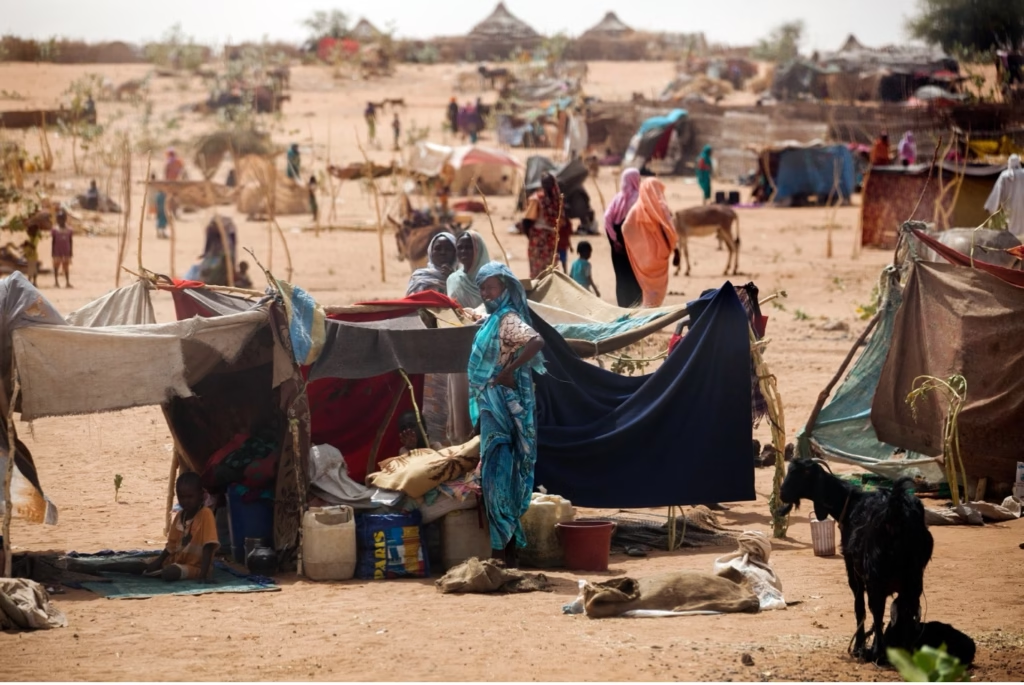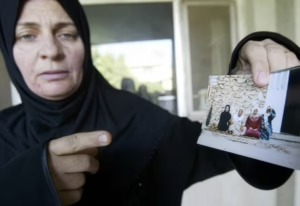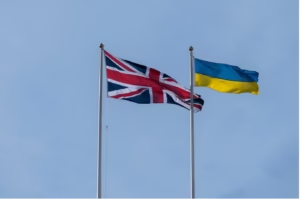Sudan’s civil war, now in its third year, has torn the country apart. The Sudanese Armed Forces (SAF) and the paramilitary Rapid Support Forces (RSF), backed by foreign powers and supported by their respective allied militias, have devastated towns and cities with impunity, waging war on civilians and plunging the country into the world’s worst civilian protection and humanitarian crisis. More than 13 million people have been forced from their homes, and over 30 million people are in need of humanitarian assistance – almost two-thirds of the entire population. Yet the conflict remains at the periphery of the international conscience, overshadowed by wars elsewhere that draw greater media, political and humanitarian focus. Even recent reports that RSF forces killed hundreds of civilians during a single incident in North Kordofan passed with little sustained coverage or diplomatic urgency.
Delayed and inconsistent action from foreign governments and the UN has both emboldened perpetrators and created a permissive environment for atrocity violence. This cycle of impunity is reinforced by the near-total collapse of independent monitoring and documentation. An estimated 90% of media infrastructure has been destroyed, with many areas experiencing ongoing communications disruptions. Due to the extreme violence, large parts of the country have become too dangerous for local and international organisations to enter, and credible reports indicate that journalists face targeted attacks and reprisals. Sudanese authorities have also deliberately blocked human rights and humanitarian law monitors from accessing many regions. In the case of the UN Mission tasked with establishing the facts of alleged crimes and violations committed by all parties, access to the country has been denied entirely. As a result, the documentation gap is so vast that there is not even a reliable death toll available for the conflict.
Against this backdrop, extraordinary efforts by civilians – most notably youth-led emergency response rooms – diaspora groups, and independent organizations are shining a light into the dark. Their efforts to capture events in real time via satellite imagery, social media and firsthand testimony have been critical for verifying atrocities, challenging disinformation and paving the way for accountability. This work must be protected, funded and integrated into international prevention and response mechanisms.
Remote monitoring
The Humanitarian Research Lab (HRL) at the Yale School of Public Health is one of the few international actors still conducting real-time monitoring in Sudan. By using very-high-resolution satellite imagery and thermal sensor data in combination with open-source data such as social media and local news reporting, and by collaborating with partners on the ground, the Lab has been able to identify and document atrocities since the beginning of the war.
“We perform four irreplaceable roles,” explains Nathaniel Raymond, Executive Director of the HRL. “We counter disinformation, provide publicly available intelligence to hold governments accountable, give humanitarians the data they need to protect civilians, and, most importantly, we provide witness.”
– Zamzam IDP camp massacre
Established in 2004 to accommodate civilians displaced by the war in Darfur, the Zamzam Internally Displaced Persons (IDP) camp housed between 500,000-750,000 people prior to April this year.
Today, the camp has nearly been emptied. Following multiple attacks, a full-scale ground assault and systemic arson by the RSF, Zamzam has been reduced to scorched earth. Thousands were forced to flee under fire, and countless others, particularly children and the elderly, who had already been under starvation conditions for over a week, had become too weak to escape.
“If we hadn’t been there, Zamzam would have died in silence,” says Raymond. “What we do is provide witness — we validate the suffering of the Sudanese people and create a record of their lives, and unfortunately, in many cases, their murders. That record is vital for accountability, but also for memory.”
In February 2024, the HRL voluntarily concluded its US government–funded program on Sudan. Separately, federal funding for its Ukraine-related work was cut earlier this year, temporarily halting operations. The Lab was slated to close for good on 1 July due to funding shortfalls, but thanks to renewed support from individual donors, it will stay open until at least 1 October, and potentially through the first half of 2026. Beyond that, its future continues to hang in the balance.
Civilian-led documentation
With the advent of the internet, smartphones and social media, civilians are more equipped than ever to monitor and record events in real time. In places where journalists and investigators cannot operate, civilians themselves have documented human rights abuses and international crimes – under the most challenging circumstances and at great personal risk – using videos, photographs, and testimonies to create a vital body of evidence. Already, digital content has been used in legal cases, such as in a Swedish case where the court relied on content uploaded to Twitter and Facebook to convict a former Syrian rebel of a war crime. In Sudan, similar documentation captured by civilians, as well as perpetrators, has been crucial to illuminating atrocities that would otherwise remain hidden.
Emergency response rooms (ERRs) – community-led initiatives that emerged in earlier conflicts and have proliferated in response to the outbreak of the ongoing war – are not primarily focused on documentation, yet in practice they play a critical role in monitoring risks, atrocity violence and the reverberating humanitarian impact of attacks on civilians and civilian infrastructure. Seen by some as the gold standard of localisation and mutual aid, ERRs deliver assistance to those most in need while generating valuable insights into conflict-related harm, establishing innovative practices in contexts where other actors, including international humanitarian organizations, have struggled to respond effectively.
Sudanese diaspora networks have also been at the centre of monitoring and documentation efforts. Drawing on trusted connections with friends, family and communities inside Sudan, they collect, verify and share information with journalists, human rights groups and policy makers. They hold the potential to bridge cultural, linguistic and political gaps that external actors struggle to navigate, as well as asserting bottom-up pressure to influence humanitarian and political responses.
States must listen and act
With traditional international monitors shut out, the work of remote analysts, civilian documenters, and diaspora networks must be valued and supported by international actors. Directly funding existing initiatives such as the ERRs and HRL is a start, but it is not enough. Governments and UN agencies must build genuine partnerships with Sudanese civil society, including diaspora communities, to ensure that evidence is preserved and monitored to prevent further harm, hold perpetrators to account and deliver justice to victims and survivors.
Crucially, states and other actors must be willing to listen. Zamzam tragically shows what is at stake when warnings go unheard. Prior to the large-scale assault, diaspora groups and the HRL had warned international officials, including at the UN Security Council, that an attack was imminent, yet no meaningful action was taken. In London, as foreign ministers from nearly 20 countries gathered for the Sudan Conference, UK-based NGOs urgently tried to raise the alarm with the Foreign Office, again with limited effect. It appears that the UK’s primary source of data and information on the situation in Sudan is the Centre for Information Resilience. However, the Centre seems to have limited capacity and resources to conduct comprehensive documentation in line with international standards or to perform real-time monitoring, highlighting the need for the UK and others to integrate civilian and civil society-led monitoring and documentation efforts into policy responses.
For European states, there is also a strategic imperative. Sudan’s war is not a distant tragedy. Its outcome will shape the security of the Red Sea, the Horn of Africa, and far beyond. As former NATO official Jamie Shea writes, “with all due respect to Ukraine and Gaza, Sudan is not for Europe one of those faraway conflicts of which we know little … It will have an impact on European security and that impact will not be positive.”
Supporting and heeding those who bear witness is one of the most immediate and practical steps the international community can take to protect civilians and confront impunity.
Support the Humanitarian Research Lab at Yale School of Public Health.
Donate to Ceasefire.




